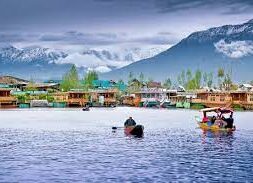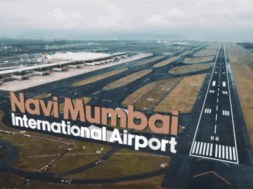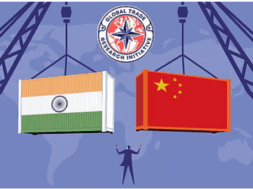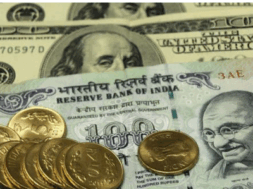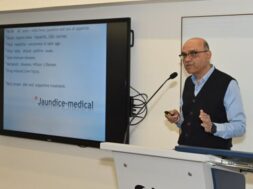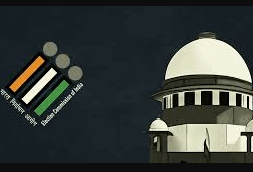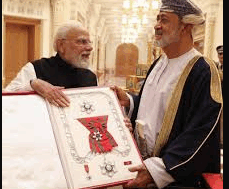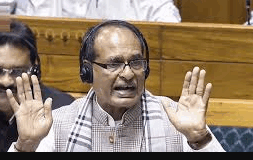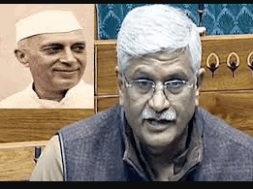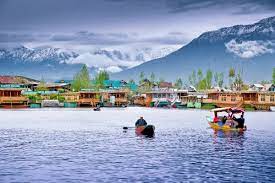
The Centre to Announce Timeframe on Thursday for Restoration of Statehood to J&K, Ladakh to Remain UT
Manas Dasgupta
NEW DELHI, Aug 29: The Centre will make a “positive” statement about the restoration of statehood to Jammu and Kashmir on Thursday but Ladakh will continue to remain a Union Territory.
The information was given to the Supreme Court on Tuesday by the Solicitor General Tushar Mehta who said he had taken the brief from the government and would be able to inform the bench about the timeframe for the restoration of the statehood to J&K on Thursday. But he said Ladakh, which was earlier a part of the Jammu and Kashmir state before abrogation of the article 370 in August, 2019, and breaking it up in two Union Territories, would continue to remain an UT. He said the elections in Ladakh would be over in September, 2023.
Mehta gave the information to the court after the Chief Justice of India (CJI) D.Y. Chandrachud on Tuesday opened a line of argument for the Centre that Jammu and Kashmir had been converted into a Union Territory for a “stipulated period”, maybe for the sake of “national security”, but pushed the Centre for an answer for a “timeframe” when it would revert back to a full-fledged State.
The Centre said the Union Territory status of Jammu and Kashmir was not a permanent feature. “We will make a positive statement the day after tomorrow (August 31) on Jammu and Kashmir. Ladakh will, however, remain a Union Territory,” Mehta informed the court in the post-lunch session of the hearing. The government would on Thursday make a “positive statement” on restoration of statehood to J&K, Mehta said.
The court – hearing petitions challenging the scrapping of article 370 which gave J&K its special status – had stressed the need for restoration of democracy as it asked Mehta, “Can you convert a State into a UT? Can a UT be carved out of a State?” and when elections could be held. “This has to come an end… give us the specific time frame as to when will you restore actual democracy. We want to record this,” the court said.
To this Mr Mehta had replied in the affirmative and pointed to Assam, Tripura and Arunachal Pradesh as examples. “I have taken instructions. The instructions are that ‘union territory’ is not a permanent feature… I will make a positive statement day after tomorrow. Ladakh will remain a UT,” Mehta said as he read out statements on the status of J&K made by Union Minister Amit Shah in the Lok Sabha.
The Constitution bench of the Supreme Court, which is led by CJI Chandrachud, also acknowledged national security concerns – posited by the government when Article 370 was scrapped four years ago – but reminded the latter of the importance of bringing back democracy in the region.
In 2019 the government – amid a furious pushback from political activists and opposition leaders – scrapped Article 370 and split Jammu and Kashmir into two union territories – J&K and Ladakh. The government had assured its critics that statehood would restored “once situation returns to normal”.
“A statement (on restoration of statehood) has been made on Parliament floor. Efforts are being made… once situation returns to normal,” Mehta told the court today, the 12th day of hearings, as he pointed to recent local elections in J&K as proof that restoration of statehood will soon take place.
On Monday the government told the court J&K’s present status is not permanent and that statehood will be restored. “It is necessary, for some time, J&K remains under the Union as a Union Territory… ultimately J&K will become a state (again),” the Solicitor General had told the Supreme Court.
Also on Monday, the court agreed with the government’s submission that the J&K constitution is “subordinate” to that of the nation but seemed to disagree with the idea that erstwhile state’s Constituent Assembly was, in reality, a legislative assembly capable of making laws. Last week the court was told no “constitutional fraud” had been perpetrated. Attorney General R Venkataramani, opening the government’s argument, told the court “due process was followed.”
“There was no wrong-doing… there was no constitutional fraud as alleged by the other side. The step (revocation of Article 370) was necessary and their argument is flawed and inconceivable,” he said. However, the court told the government it would have to justify procedure adopted for abrogation of Article 370 as it could not postulate a situation “where the ends justify the means.”
Petitioners opposing repeal of Article 370 have insisted the provision could not have been abrogated as the term of the J&K Assembly – the assent of which was required before taking such a step – ended in 1957, after which, it was argued, Article 370 acquired a “permanent” status.
During the morning session of the hearing, the Chief Justice had asked the Solicitor General and Attorney General to secure instructions from the government on the period of time within which Jammu and Kashmir would return to being a State.
“We do not want to bind you… We understand there are matters of national security involved… We know that preservation of the nation is the overriding concern… So, without putting you [the Solicitor General] or the Attorney General in a bind, can you seek instructions on whether there is some time frame? The government has to make a statement before us that the progression back to Statehood will take place within a time… That this is not a Union Territory permanently,” Chief Justice Chandrachud had told the Centre.
The Chief Justice had reminded the Centre that the “restoration of democracy is a vital component for our nation.” The Chief Justice had offered the “national security” line to the government amidst a barrage of questions from the Constitution Bench on whether the Parliament has the power to carve existing and functional border States into Union Territories.
“You [the Union Government] can argue that right now we have an extreme situation in terms of national security and we want, for a stipulated period, a Union Territory to be created. You can say the creation of the Union Territory is not a feature of permanence, but it [Jammu and Kashmir] will progress back to its position of a State,” Chief Justice Chandrachud suggested to Mr. Mehta.
Mr. Mehta agreed that this was “exactly what the government had said in the Parliament from day one.” “Jammu and Kashmir will return to being a State after return to normalcy,” he assured. “You can say the Union of India wanted to have control for a certain period… After all, whether a Union Territory or a State, all of us will survive if the nation survives. If the nation does not survive, there is no relevance whether it is a State or a Union Territory… Should we not give that allowance to the Parliament to postulate that for a certain period, for the preservation of the Union itself, this particular State should go into the fold of a Union Territory on the clear understanding that it will revert to Statehood over a period of time?” the Chief Justice posed.
In the hearing, Mehta affirmed that Jammu and Kashmir was seeing better days after the abrogation of Article 370. He said the erstwhile State had been plagued by incidents of terrorism, infiltration, pelting of stones, hartals, etc, before. Post-abrogation, local elections had been held. “Democracy has seeped into the grassroots in Jammu and Kashmir,” Mehta said. “The government has a blueprint working,” he added.
“But that means normalcy has been restored in Jammu and Kashmir. So is it not time to return Jammu and Kashmir to Statehood?” senior advocate Kapil Sibal intervened to ask the court. The court also voiced its apprehensions about the source of the Parliament’s power to transform States to Union Territories even as Mehta said the case of Jammu and Kashmir, which has seen violence and cross border terrorism for decades, was “one of its kind.”
“Once you concede that Union of India has the power to reorganise any State, how do you address the apprehensions States feel about this power of yours? How do you ensure that this power may not be used on every State?” Chief Justice Chandrachud asked the Solicitor General.
Justice Sanjay Kishan Kaul said there was a “problem” with the Centre’s argument that Jammu and Kashmir was one of its kind. He pointed to Punjab, another border State which saw violence, and the north-eastern States. “One of the north-eastern States is facing violence right now,” Justice B.R. Gavai said, referring to Manipur.
Mehta said the nation has borders with four countries, and not all of them are friendly. “We cannot choose our neighbours. What the Chief Justice apprehends is would you go ahead and reorganise any of these States when you see trouble? You cannot say that just because it is a border State, it has to be treated differently,” Justice Kaul observed.
Chief Justice Chandrachud said Himachal Pradesh and Uttarakhand were also border States. Justices Kaul said the Parliament under Article 3 could carve out a Union Territory from a State. But could the Parliament convert an entire State into a Union Territory or portion out a part of the State as a Union Territory — Ladakh — and declare the pre-carved part — Jammu and Kashmir — as another Union Territory, Justice Kaul asked.
Justice Sanjiv Khanna questioned whether by suspending the consultation process with the Jammu and Kashmir State Assembly before reorganising the State, the Centre had virtually taken away the role of the State government in decision-making process.
